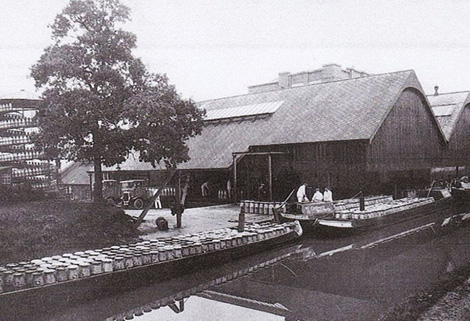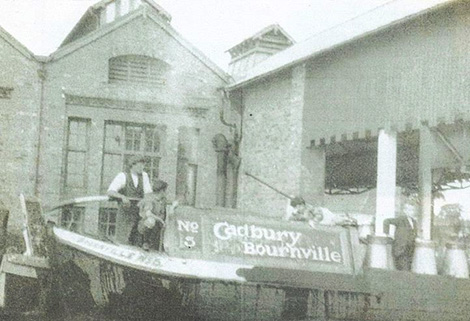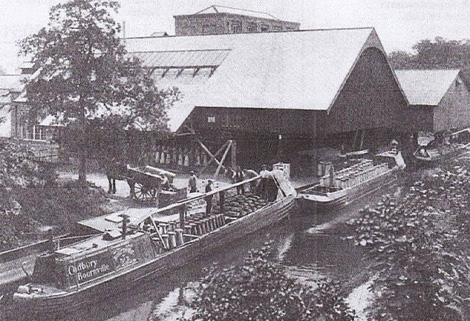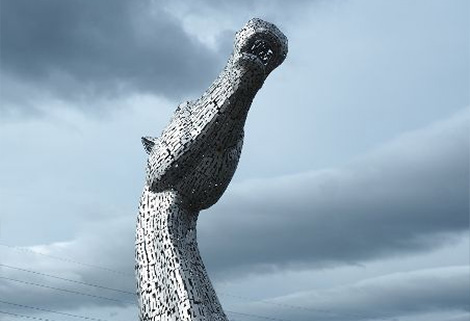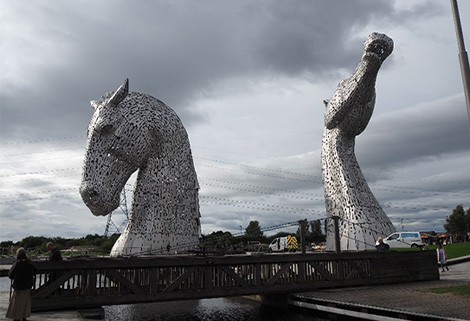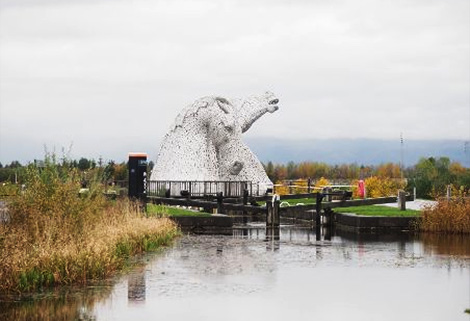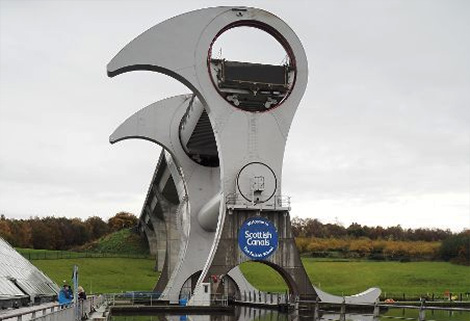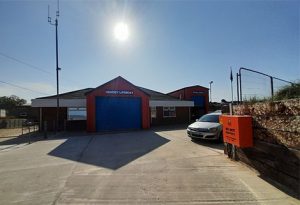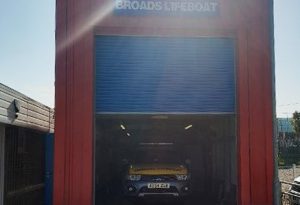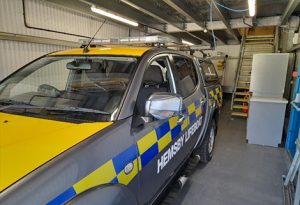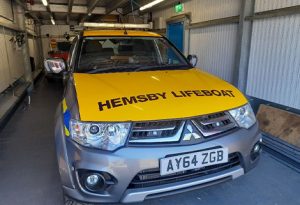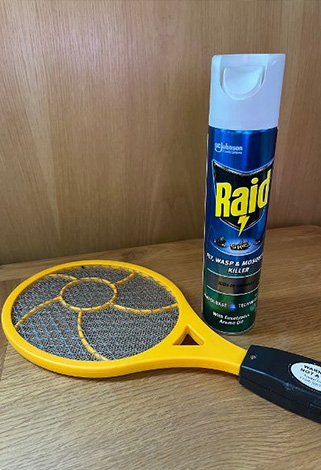What a wonderful start to this summer boating season we are having. We have all enjoyed the arrival of the June sunshine and the settled weather set to continue. May certainly was “marvellous May” giving us stunning blossom displays all month and thanks to “no mow May” we enjoyed the pretty wildflower displays and sweet smells. Now the elderflower is coming into full bloom I’ll be starting my cordial in the next few days, perfect timing as I have only just used up last year’s batch.
We have recently enjoyed some steady cruising on the quieter Northern waterways and our eyes have been wide open to appreciate all that we have seen, one advantage has been some wider towpaths giving us plenty of space to cook outdoors and watch the sunset.
The boat roof garden and the herbs are doing well, giving the convenience of fresh mint, parsley, chives, oregano, thyme and rosemary on hand. I use lots of coriander and basil too which is potted up and in the cratch. This year I have lemon balm, which is considered to have health benefits and is refreshing in boiling water as a tea. I have also discovered lemon balm with peaches or any mixed fruit salad, as a pesto with fish, or with new potatoes as it is a member of the mint family.
PEACHES WITH HONEY, LEMON BALM AND CRÈME FRAICHE
Halve two peaches making a cut all the way round with a sharp knife, twist in opposite directions to separate the halves and remove the stones. Dot with butter and sprinkle with brown sugar, place cut side down in a foil parcel and pop in the oven or over the barbeque for about 15 minutes until tender, add a drizzle of honey, a few torn lemon balm or mint leaves and return to the heat for another 5 minutes. Serve with crème fraiche.
FENNEL BISCUITS
These are delicious served with those sweet honey peaches and crème fraiche.
135g wholemeal flour
115g rolled oats
55g dark brown sugar
110g butter
20g coconut oil
2 tsp fennel seeds
1 tsp baking powder
Pinch salt
Combine all the ingredients and turn onto a lightly floured surface, shape into a ball and wrap in cling then refrigerate for 15 minutes. Roll out to 3mm thick between two sheets of greaseproof to avoid sticking. Cut into about 10cm rounds and bake on a lined tray, spaced well apart for 15 mins at 180 fan.
Why not try peaches or nectarines in a salad? They are delicious with lentils, a few greens, sliced red onion, feta and honey vinaigrette (see below) with the addition of a 1 tsp wholegrain mustard.
It's the dressing that really does make a salad interesting, be sure to use a good quality extra virgin olive oil, or sometimes I use cold pressed rapeseed oil.
I often chop or finely shred salad combinations, sometimes with beans and pulses, add the dressing and make a wrap out of warm breads or crispy large lettuce leaves. Or use up last of the bread, cut into crouton size chunks and toss in a hot frying pan with a little garlic oil and seasoning and add to a salad bowl.

LEMON BALM VINAIGRETTE
Makes a zesty dressing for leafy greens and summer salads
8 tbsp extra virgin olive oil
3 tbsp white wine vinegar
1 tsp garlic paste, or crushed garlic clove
8 fresh lemon balm leaves
Salt and black pepper
Blitz all the ingredients together until finely blended. If you don’t have a mini chopper or stick blender, use a pestle and mortar or very finely chop and whisk together.
BEANS AND PULSES SALADS WITH HERBY DRESSING
Use any combination of tinned beans such as cannellini, black, chickpeas (otherwise known as garbanzo beans). Drain and rinse and then add finely chopped red onion, peppers, tomatoes, cucumber, spinach etc. salt, pepper and garlic then toss with 3 tbsp olive oil and 2 tbsp cider or balsamic vinegar and chopped herbs such as parsley, mint, coriander or basil. Add a little finely chopped fresh chilli for an extra kick.
These hearty salads are also great with tinned fish such as tuna or sliced chorizo or pepperoni.

AVOCADO AND LIME DIP Makes an ideal accompaniment to a bean salad or at the barbeque.
Blend the flesh of two ripe avocados with 1 tbsp lime juice, pinch chilli flakes or powder, finely grated garlic clove and plenty of salt and black pepper.
LEMON AND FETA VINIAGRETTE
A real Summery addition to salad
¼ Cup extra virgin olive oil
¼ cup lemon juice
¼ crumbled feta
1 finely grated garlic clove
1 tbsp Dijon mustard
2 tbsp clear honey
1 tsp chopped oregano
2 tsp lemon zest
Salt and pepper to taste
YOGHURT DRESSING Use with spiced meats, kebabs, flatbreads and salads
300ml natural yoghurt
2 finely grated or minced garlic cloves
1 tbsp fresh finely chopped herbs such as mint (or dried)
Salt and black pepper to taste
Add lemon juice, zest and chopped cucumber to become TZATZIKI.
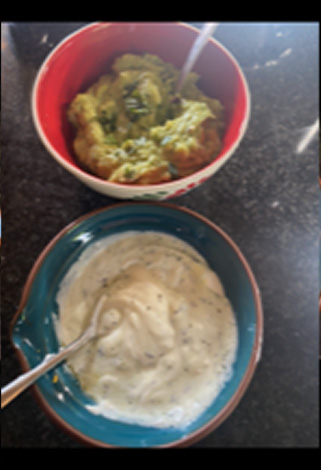
SWEET AND SOUR HONEY DRESSING Useful over fish, noodles and salads.
1 tsp clear honey
1 tbsp hot water to combine with the honey
2 tsp cider vinegar
1 tsp soy sauce
1 tbsp sweet wine or ½ tsp sugar
Add a few dried chilli flakes for heat (optional)
COCONUT DRESSING Great with fish such as prawns, noodles or curries.
Add a little lime zest and juice to tinned coconut milk with a pinch of sugar.
MANGO DRESSING For cold rice and chicken salads
4 tbsp mango chutney
1 tbsp oil
1 tbsp brown sugar
1 tbsp medium curry powder
Juice of 1 - 2 lemons (depending on size)
I you don’t have lemons a good substitute would be cider or white or red wine vinegar.
HONEY VINAIGRETTE Perfect with summer salads
3 tbsp extra virgin olive oil
3 tbsp white wine or cider vinegar
1 tbsp clear honey
Salt and pepper to taste
BALSAMIC VINAIGRETTE
3 tbsp balsamic vinegar
2 tbsp maple syrup or honey (use ½ tsp sugar if you don’t have these)
2 tbsp extra virgin olive oil
Juice ½ lemon
HALLOUMI Is another big summer favourite to cook over the barbeque. Simply marinate large cubes together with onions, peppers, mushrooms, courgettes etc. with oil, herbs, pepper and a squeeze of lemon juice before assembling the skewers ready to grill.
Make it spicy by slicing it into oblongs and rubbing with cumin, salt, pepper and oil, add smoked paprika powder to make it smoky and serve with a yoghurt dressing.
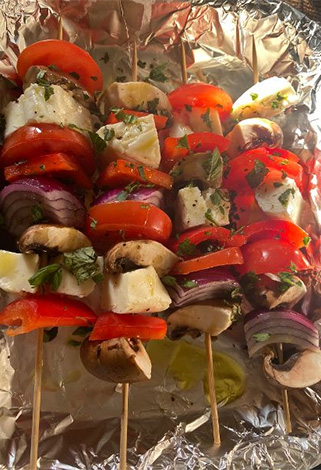
PIZZAS ON THE BBQ
I swear by my pizza stone on the Cobb.
If I don’t plan to make the dough in advance a quick no rise pizza dough is just as good using 1 ½ cups self raising flour, 1 cup plain yoghurt and ½ tsp salt, just combine the ingredients and knead for ten mins and the dough is ready to use. This will give two good sized bases. These can be cooked on the stove top by lightly oiling a large frying pan, start the bases off, add the tomato sauce and topping of your choice with cheese and finish under the grill for the last few minutes. Or if you really don’t have the time, use a ready bought flatbread and simply add your topping, just don’t cook for as long.
Sandwich two wraps together with cheese and your favourite filling along with Mexican spices and it becomes a quesadilla.
When the barbeque coals are still hot and cooking is finished, I often char-grill peppers by placing them over the hot grill, keep turning until the flesh is blackened, cover with cling in a small bowl or bag. When cool discard the skins and slice the flesh into thin pieces to keep in the fridge for a few days for adding to salads and pasta dishes etc.
I have the frying pan accessory with the cobb so will often use it for a stir fry or curry and cook outside to keep the heat out of the boat.
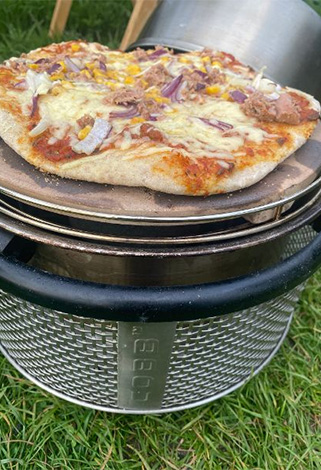
HOME MADE TACO SEASONING
I make this in a batch to keep in a jar for use with those bean dishes, with minced beef for a taco meal or rubbed over a ready bought plain beef burger or chicken with a little oil before barbequing.
2 tbsp chilli powder
5 tsp paprika
4 tsp cumin
2 tsp garlic powder
1 ¼ tsp cayenne pepper
1 ¼ tsp dried oregano
1 tsp crushed red pepper (optional)
SHAWARMA MARINADE This is a type of middle eastern spice blend and goes well with chicken or lamb kebabs. Serve with flatbreads, salad and yoghurt dressing.
These quantities are plenty for a marinade for 2 to 4 chicken thighs or breasts.
I also use this for veg skewers with aubergine, onion, courgette and pepper, marinating first before threading on the skewer.
Whisk 1 tbsp olive oil with the juice of 1 lemon
Add 3 finely grated garlic cloves, 1 tsp cumin, 1 tsp smoked paprika, ½ tsp turmeric, ¼ tsp curry powder, 1/8 tsp cinnamon, pinch red chilli flakes, 1 tsp salt and black pepper, tiny pinch ground cloves.
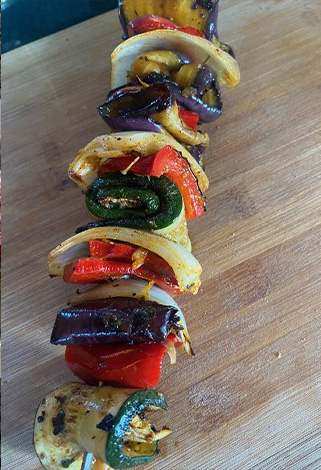
SHAWARMA BURGERS
Use the dry spice combination for the shawarma marinade recipe, but only half quantity, save the other half for next time.
Very finely chop or mince half an onion and 1 clove of garlic, add to the minced beef (enough for 4 small or 2 larger burgers) with the dry spices.
Work everything together with your hands adding a little oil, squeeze very firmly together and refrigerate for a half an hour. Squeeze together again forming into the burgers, brush with a little oil before cooking to avoid sticking. Note, they keep their shape better after refrigeration. Gently cook over the hot barbeque.
SUMMER SARDINE SALAD
This is a little like a niçoise salad but using tinned sardines, hard boiled egg and salad leaves with black olives, tomato and cucumber.
Finish with a tomato mayonnaise dressing simply by adding a little cider vinegar, olive oil, lemon juice and tomato puree to mayonnaise.
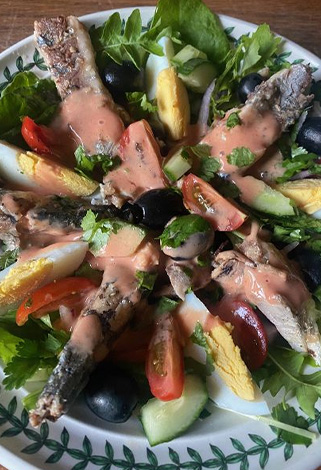
POTATO BACON AND BROCCOLI SALAD
Par boil the potatoes and then strain and dry before rubbing over a little smoked paprika, salt and oil. Finish over the barbeque grill or flash in the frying pan for a few minutes each side. Dress with the lemon and feta vinaigrette recipe above.

STICKY SAUSAGES
4 tbsp honey
1 tbsp tomato puree
1 tbsp soy sauce
Dash of oil
Mix everything together and coat the sausages well before cooking over the barbeque. This also works well roasted in the oven with sliced onions and potatoes.
BEAN BURGERS
1 tin mixed beans, strained and roughly mashed
1 small or ½ large onion very finely chopped
1 red chilli deseeded and very finely chopped
1 to 2 slices (depending on size) wholemeal breadcrumbs
Salt and pepper
Blend everything together, ideally pulse in a processor, the finer the easier it will keep the burger together.
Form into shapes and then coat with flour and chill for 1 hour.
Brush well with oil before cooking over the barbeque for 5/6 minutes each side.
Delicious served with avocado and lime dip.
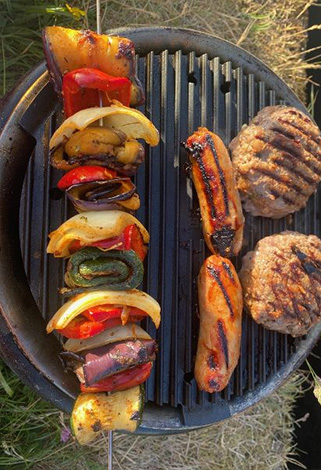
HOT DOG ONIONS
2 large onions thinly sliced
2 tbsp oil
2 tbsp white wine or cider vinegar
1 tin tomatoes blitzed to a puree
½ tsp salt
Black pepper to taste
1 to 2 tbsp hot chilli dipping sauce (depending how much heat you like)
Sautee the onions in the oil for 5 to 10 minutes and then add the remaining ingredients, simmer for ten minutes.
CARAMELISED ONIONS
2 large onions thinly sliced
2 tbsp oil
½ tsp each of sugar, salt, paprika, cumin and oregano
Add the onions, sugar and salt to the oil in a frying pan and very slowly cook for at least 20 minutes stirring often until lightly caramelized. Remove from the heat and add the spices, taste and adjust the seasoning if necessary.
These will reheat, wrapped in foil over the barbeque.


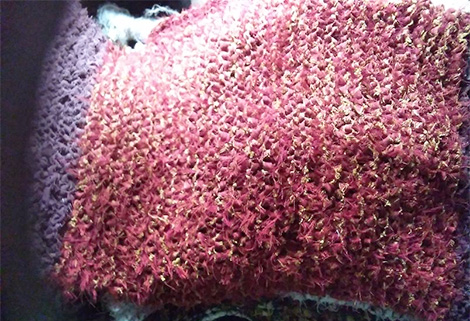

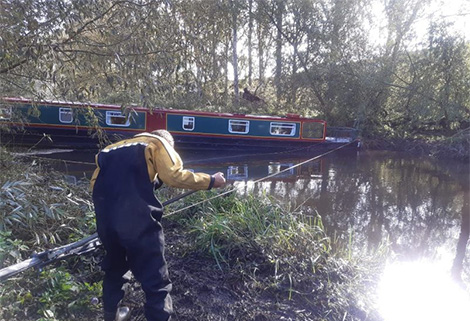
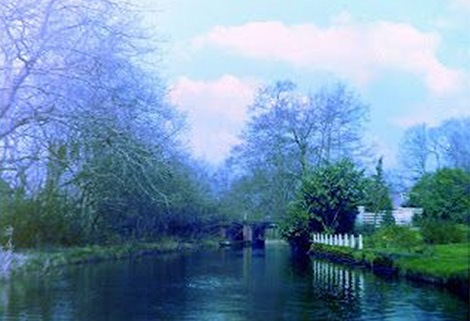
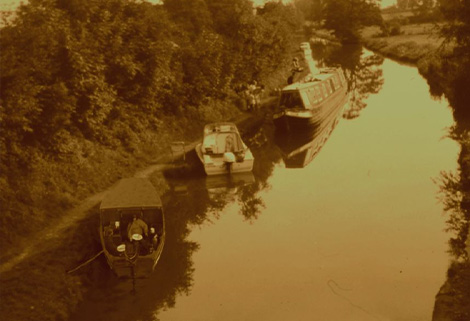
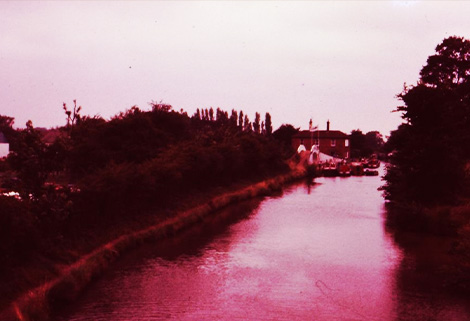
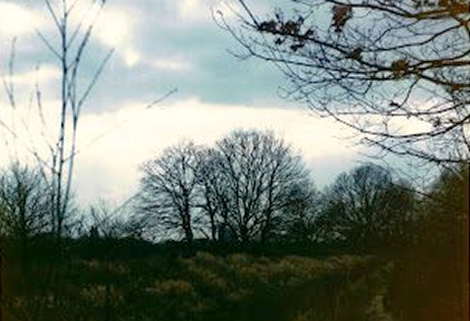
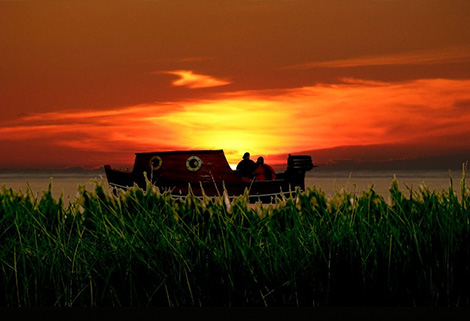


 At one point, I said to Rob, ‘I feel really emotional being back here’. To which he replied with his usual empathy, ‘I’d save your energy for the climb if I were you’ 🙄
At one point, I said to Rob, ‘I feel really emotional being back here’. To which he replied with his usual empathy, ‘I’d save your energy for the climb if I were you’ 🙄